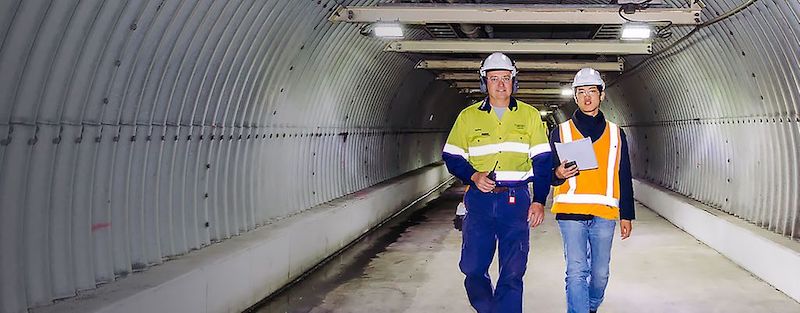Mangoola Coal Operations Pty Ltd, a subsidiary of Glencore Coal, sought approval to establish a new open-cut mining area to the north of existing operations at its Mangoola Mine, 20km west of Muswellbrook. The NSW’s Independent Planning Commission has approved the extension with conditions.
An additional 52-million tonnes of run-of-mine coal would be extracted over approximately eight years, with operations to cease at the site in December 2030 – a 13-month extension to the company’s existing development consent.
Glencore “no intention to damage Indigenous Sacred Site”
NSW seeks comment on proposed amendments to WHS laws
The Department of Planning, Industry & Environment finalised its whole-of-government assessment of the Mangooal Coal Continued Operations Project in January 2021, which concluded the Project was “approvable, subject to comprehensive conditions”; however, the Commission is the consent authority for the state significant development application because the Department received more than 50 ‘unique’ public objections to the Project.
Commissioners Professor Snow Barlow (Panel chair) and Peter Cochrane were appointed to consider the SSD application. They met with the Applicant, Department and Muswellbrook Shire Council; inspected the site and surrounding areas; and hosted a two-day electronic public hearing in March to hear community views. The Commission also received 895 written public submissions, including 776 in support, 107 objections and 12 neutral comments.
Supporters of the proposed mine extension cited the projected social and economic benefits to the local area, Upper Hunter region and to NSW, including job creation and retention. Those opposed to the Project raised concerns about air quality, biodiversity, greenhouse gas emissions and climate change, impacts on water resources, noise impacts, traffic and transport impacts, socio-economics, Aboriginal cultural heritage, and rehabilitation.
As a result of concerns raised about air quality, the Commission met with the Environment Protection Authority, NSW Health and the Department to discuss air quality trends and impacts in the Upper Hunter.
After considering all the evidence and community views, the Commission has today (Monday 26 April 2021) determined to approve the state significant development application, subject to 179 conditions – finding that “on balance and when weighed against the objects of the [Environmental Planning & Assessment] Act, ecologically sustainable development principles, the current policy frameworks, and socio-economic benefits, the impacts associated with the Project are acceptable and the Project is in the public interest.”
In its Statement of Reasons for Decision, the Commission noted the Project “represents a reasonable ‘brownfield’ extension of the existing Mangoola Coal Mine that would enable the economic and beneficial reuse of existing infrastructure and an orderly and economic use of land.”
“Notwithstanding the concerns raised … the Commission finds that on balance and when weighed against the impacts under the current policy and regulatory framework, the Project would generate net positive social and economic benefits for the local area, Hunter region and to NSW” it added.
The Project – anticipated to create 145 construction and 80 operational jobs, and provide ongoing employment for 400 workers – will use existing infrastructure including the Mangoola Mine Coal Handling and Processing Plant, rail loop and mining fleet and involve the development of a new haul road overpass which would also traverse Wybong Road and Big Flat Creek, to connect the Northern Extension Area with the Mangoola Mine.
Up to $129-million in mining royalties will be generated by the Project.
The conditions of consent imposed by the Commission seek to:
- prevent, minimise and/or offset adverse environmental impacts;
- set standards and performance measures for acceptable environmental performance;
- require regular monitoring and reporting; and
- provide for the ongoing environmental management of the development.
Read more Mining Safety News
Image by Glencore














Add Comment